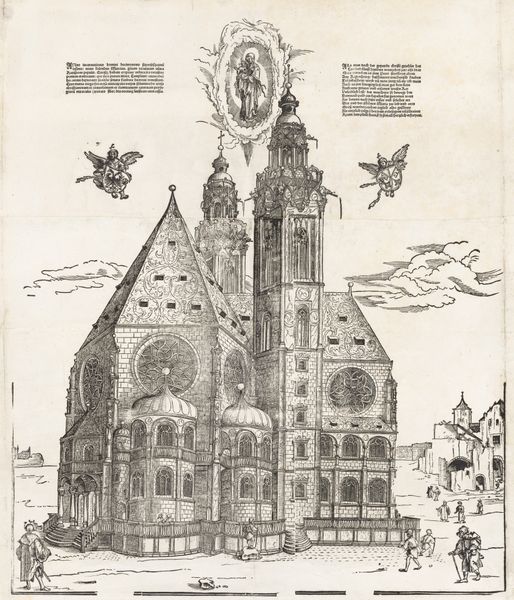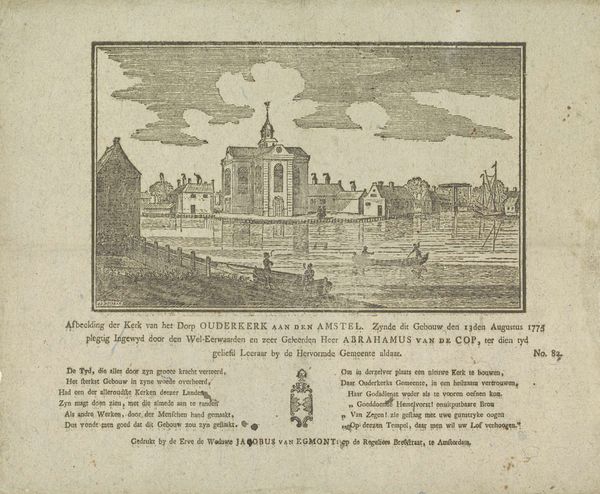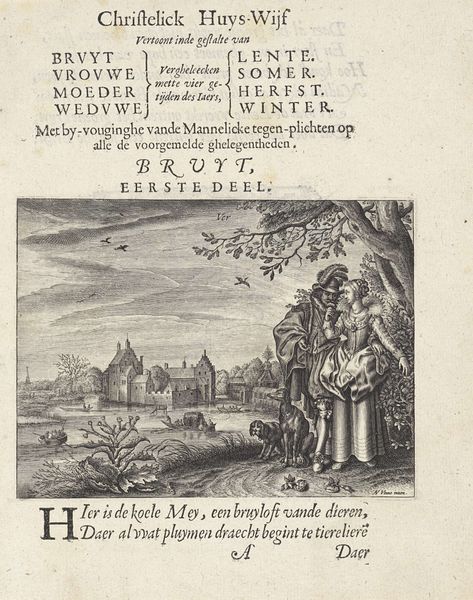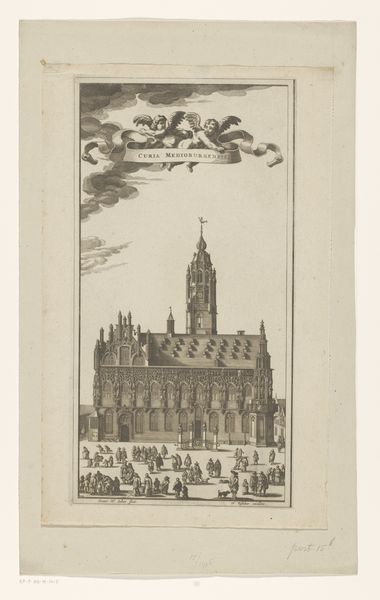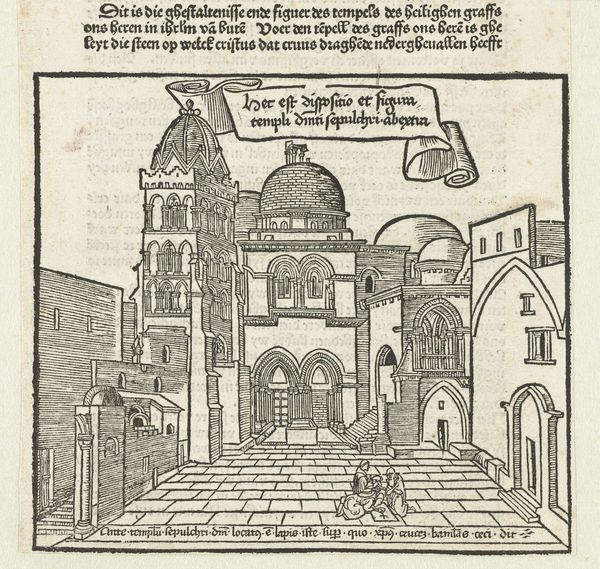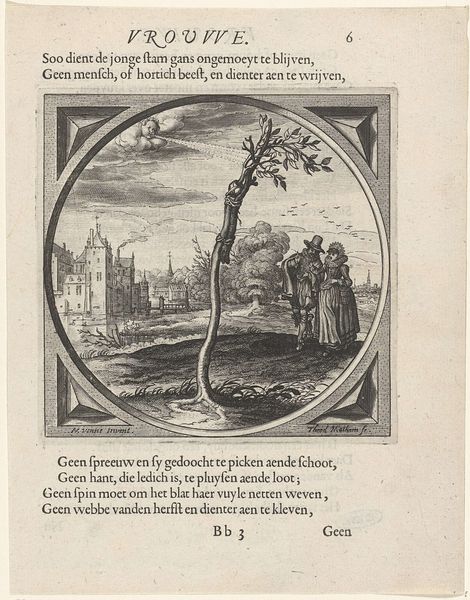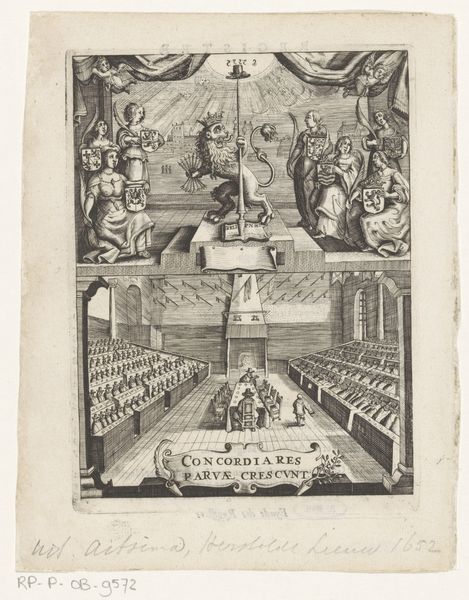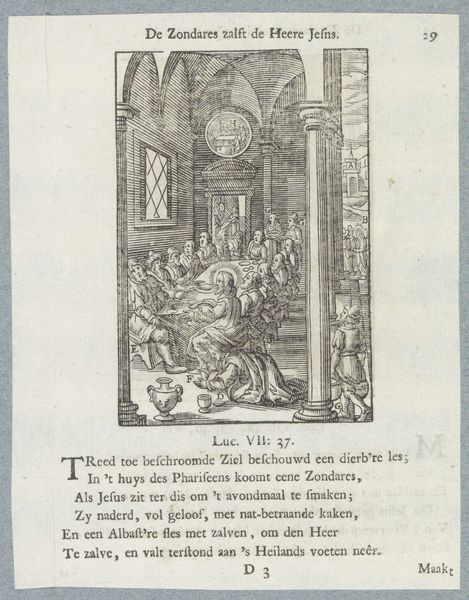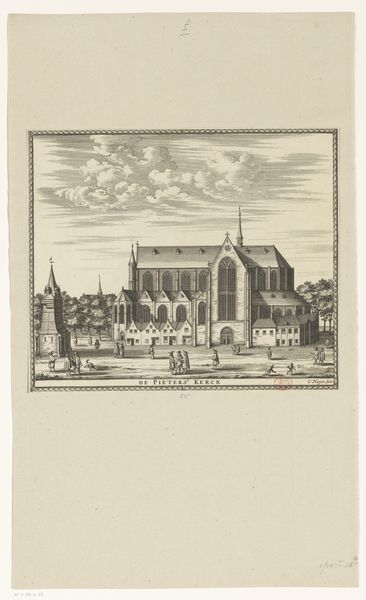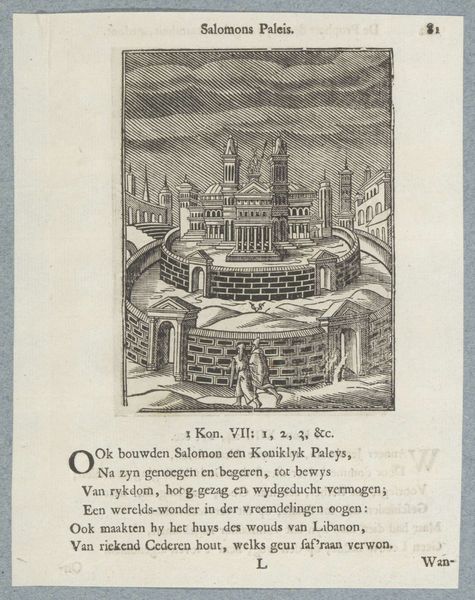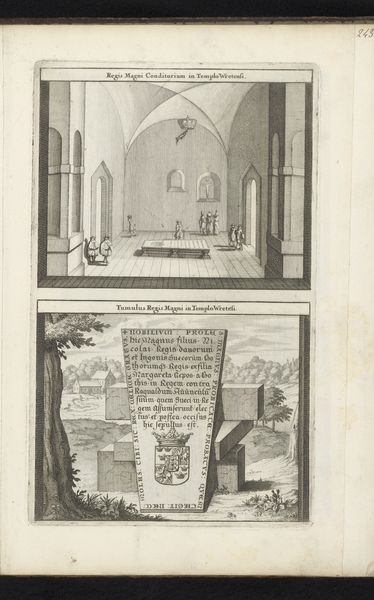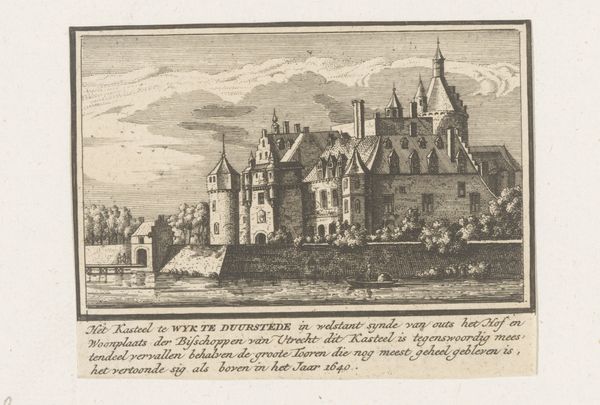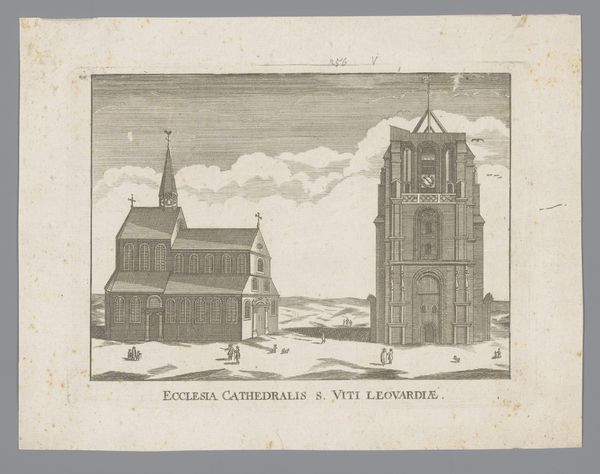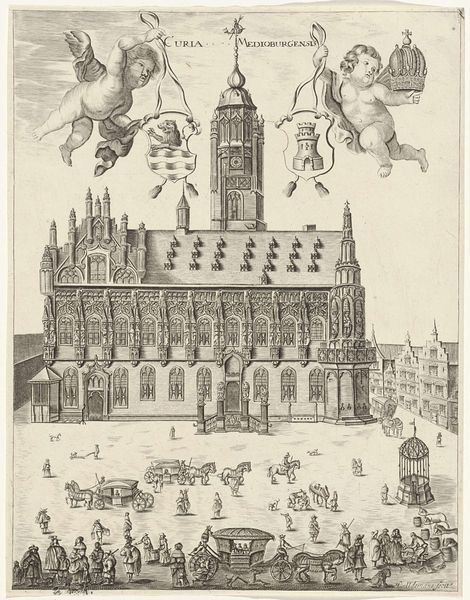
print, engraving, architecture
#
dutch-golden-age
# print
#
cityscape
#
history-painting
#
engraving
#
architecture
Dimensions: height 156 mm, width 212 mm, height 347 mm, width 271 mm
Copyright: Rijks Museum: Open Domain
Curator: This engraving by Abraham Dircksz. Santvoort, created in 1648, is titled "Fame Proclaiming Peace to Breda." The location shown is above the Grote Kerk in Breda. It commemorates a moment of immense historical importance. Editor: My initial impression is how the light and airy rendering of the architecture contrasts sharply with the bold text that surrounds it. It gives me a feeling of delicate hope amidst a structured order. Curator: It's fitting that you notice the contrast. This work, from the Dutch Golden Age, uses text and image to underscore themes of both cityscape and history-painting, combined on one print, signifying layers of artistic techniques at the time. Santvoort utilized engraving, and he also gave a nod to architecture of course. It's a fascinating medium combining artistry with functionality. Editor: Functionality is key here. Printmaking allowed for widespread dissemination. Considering the time and context, a statement such as "Fame Proclaiming Peace" carries weight, especially in terms of its societal impact and the labor involved in distributing such a message widely during a time of potential upheaval and renegotiation of boundaries. It underscores that materiality wasn't just about aesthetics, it was about influencing public sentiment. Curator: Precisely. The image of "Fame" at the top emphasizes the symbolism present. Angels and winged figures often symbolized divine favor or important news, aligning earthly events with higher, possibly divine, purpose. Its symbolism reinforces the importance and gravity of peace arriving in Breda. The announcement wasn't merely political, but touched upon something deeply spiritual for its viewers. Editor: It's interesting how you place so much emphasis on this supposed ethereal nature when looking at such pieces! What stands out to me, even looking at it now, is its reliance on materials such as ink and paper; that physical reality would directly determine what sort of reception Santvoort would eventually come to receive and consider. This print only emphasizes the degree of access to peace in its moment of creation. It's always worth considering where one stands in relation to this announcement itself. Curator: I appreciate how grounded in the tangible world you keep me. Seeing how materials both empower and restrain interpretations highlights both the ingenuity and limitations of visual communication, but at the heart it also shows how images influence cultural memory, particularly regarding concepts as weighty as "peace." Editor: And looking again, this allows me to see a work where texture gives way to a sense of almost fragile resolve – a physical echo of historical memory being imprinted in that very moment.
Comments
No comments
Be the first to comment and join the conversation on the ultimate creative platform.
